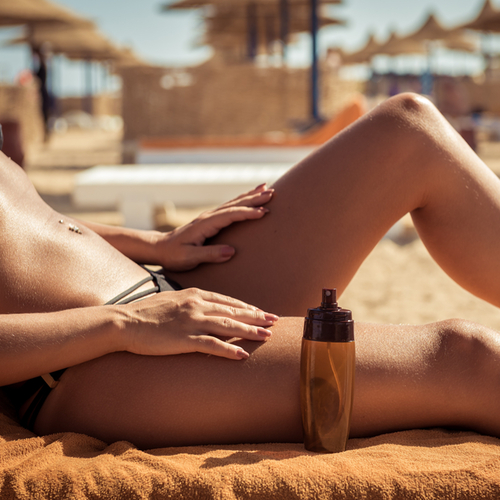Tanning is a process in which skin pigmentation darkens as a result of exposure to ultraviolet (UV) light. There are two types of skin tanning. Immediate tanning is a response to the UVA radiation of sunlight. This tanning arises just a short time after sunbathing and lasts only a few hours or days. Delayed tanning is caused by the UVB radiation of sunlight. It appears approximately 2-3 days after sunbathing and lasts longer, disappearing with natural renewal of the skin. The intensity of tanning depends on the skin type.
Many Americans, including up to 80% of people under age 25, believe they look better with a tan. But this infatuation with tanning only came about in the 20th Century. In the 19th Century and earlier, being as pale as possible was desirable in certain countries, particularly the United States and some European nations. Being pale was a symbol of wealth. Now, in the 21st Century, tanning is very popular. Indoor tanning, one of the most popular types of tanning, is reported to be a $2 billion-a-year industry in the United States. According to industry estimates, 28 million Americans are tanning indoors annually at about 25,000 tanning salons around the country. Popular methods of tanning follow:
Outdoor tanning is tanning from the direct exposure to sunlight. Many forms of outdoor tanning products are available, including creams, gels, sprays, and lotions.
Indoor tanning is tanning without the direct exposure to sunlight. Some of the devices used for indoor tanning are tanning beds and sunlamps. Other tanning devices are tanning "accelerators" or tanning pills. These products claim to speed up the body's production of melanin or darken the skin, but there is currently no evidence that these products are effective and they have not been approved by government agencies for tanning purposes. Most sun lamps and sun beds emit mainly UVA radiation and are less likely to cause sunburn than UVB radiation from sunlight. But, contrary to the claims of indoor tanning being safe, some tanning lamps do emit UVB light. Additionally, the concentration of UVA light from a tanning bed is far greater than that from the sun; some reports state that it is about 5 times greater than from the sun, so in the long run a person may absorb more UV radiation and increase the risk for skin cancer and other side effects. There has been a suspected link between malignant melanoma and UVA radiation as well as UVB radiation.
Sunless tanning is tanning without any UV exposure. It works by oxidation of the outermost skin by dihydroxyacetone (DHA). DHA is the only color additive approved by the Food and Drug Administration (FDA) for use in sunless tanning products. When applied, DHA reacts with dead cells in the outermost layer of skin (stratum corneum) to temporarily darken the skin's appearance within two hours. The coloring does not wash off, but it gradually fades as the dead skin cells slough off. In most cases, the color is completely gone after five to seven days. There are many different forms of sunless tanning products available for home use, and spray-on tanning is also available at many salons.





